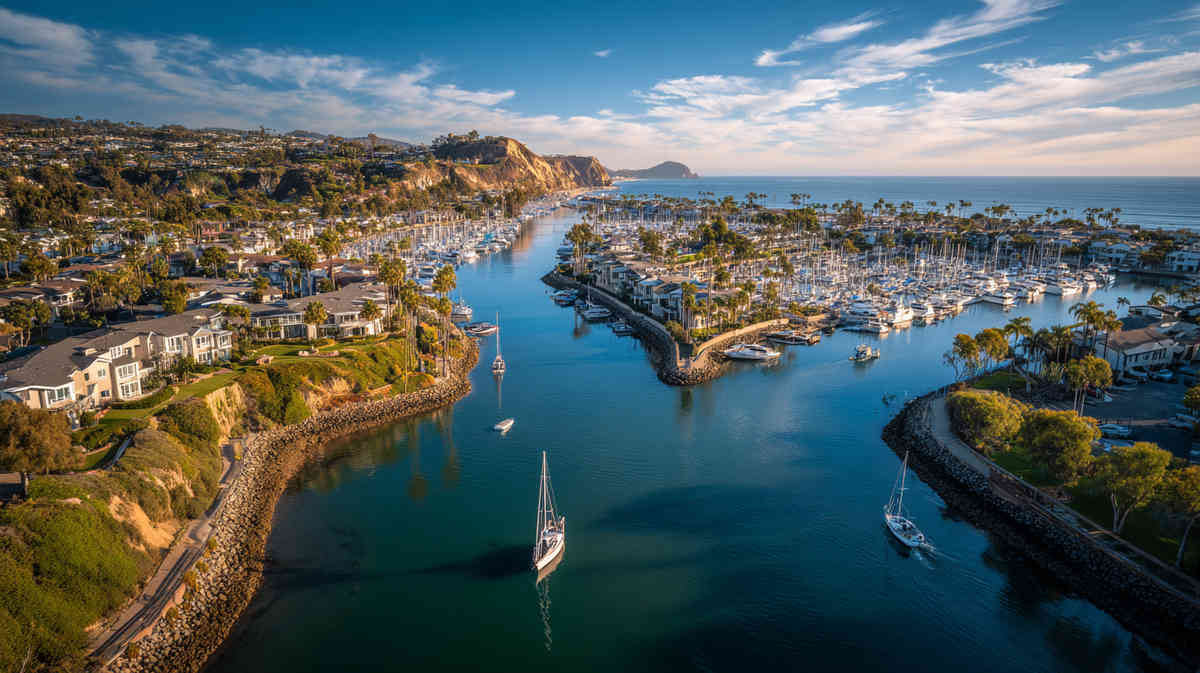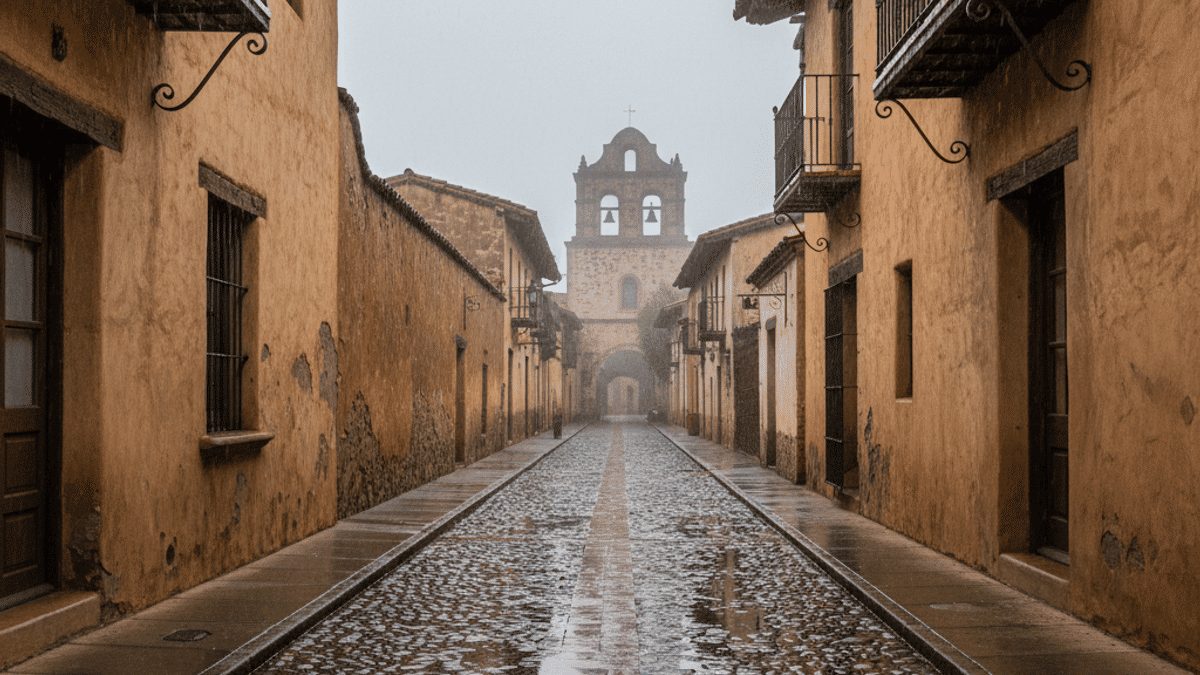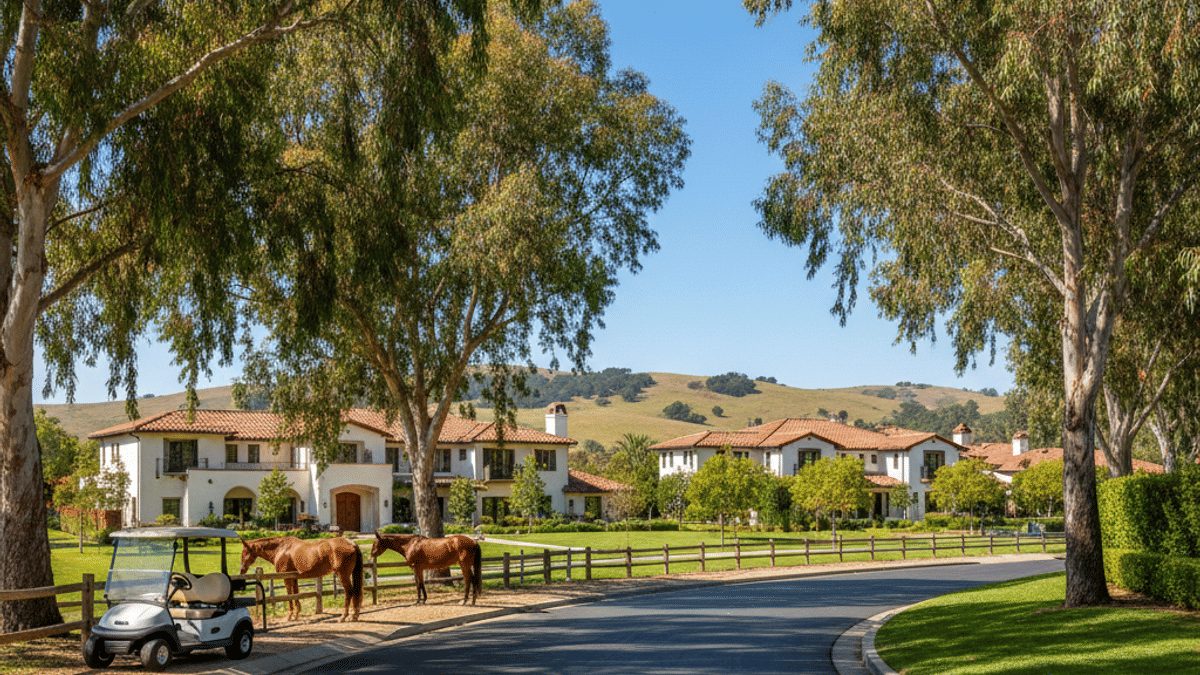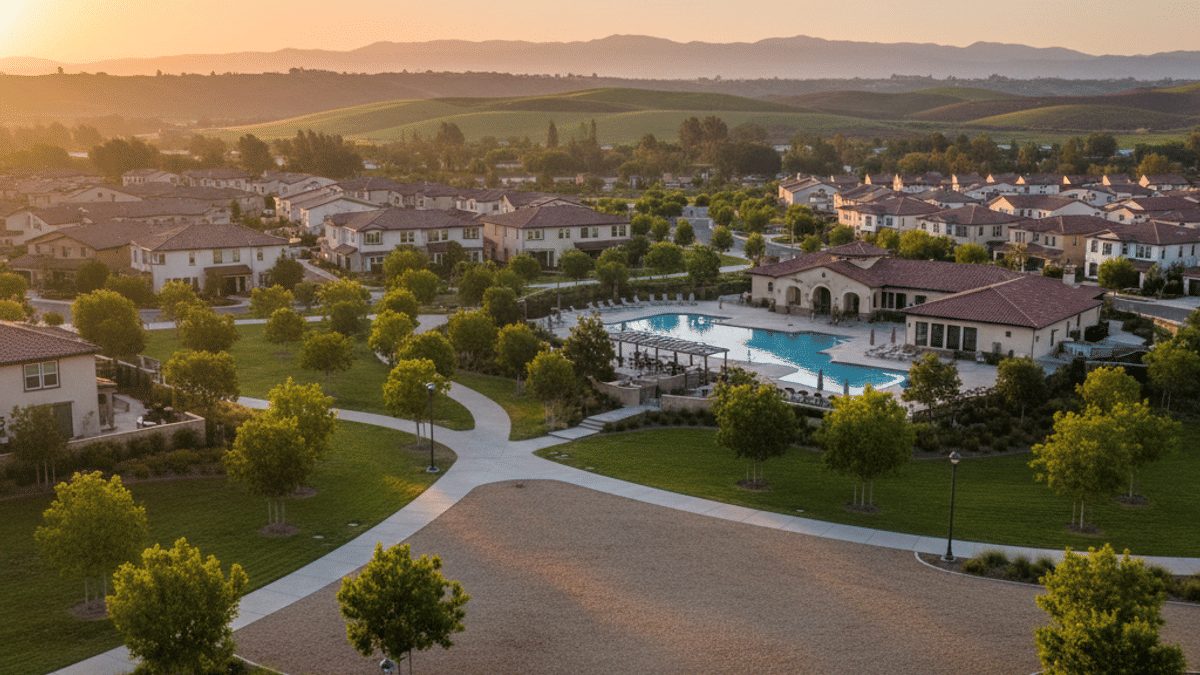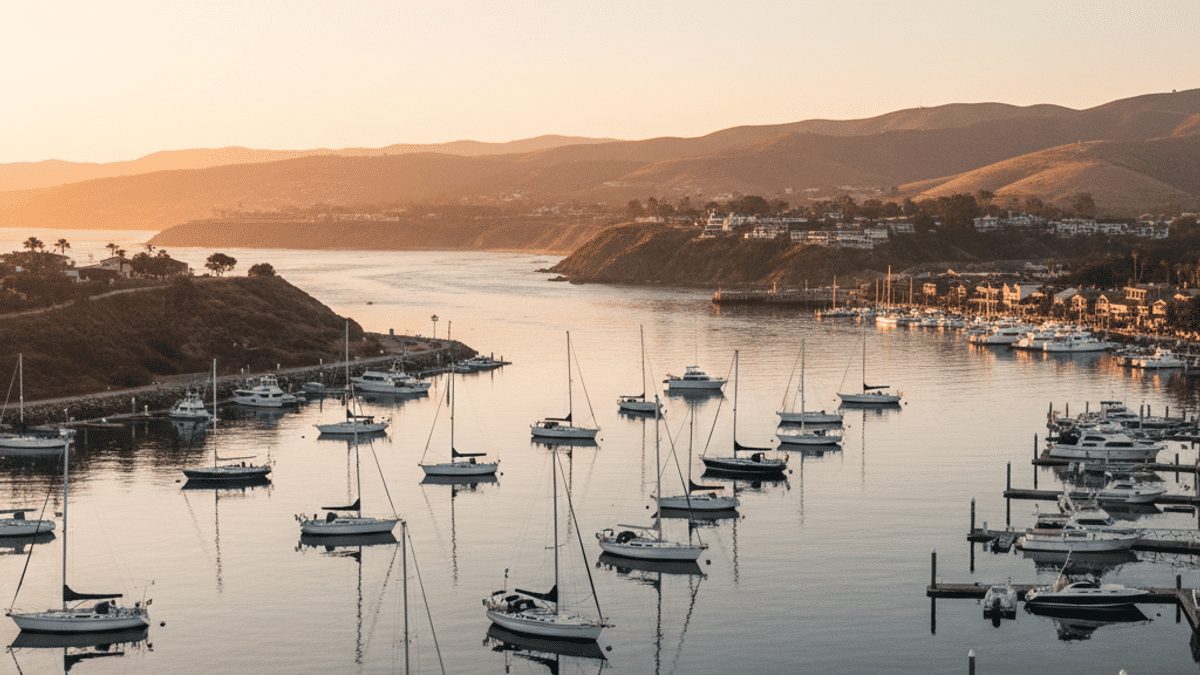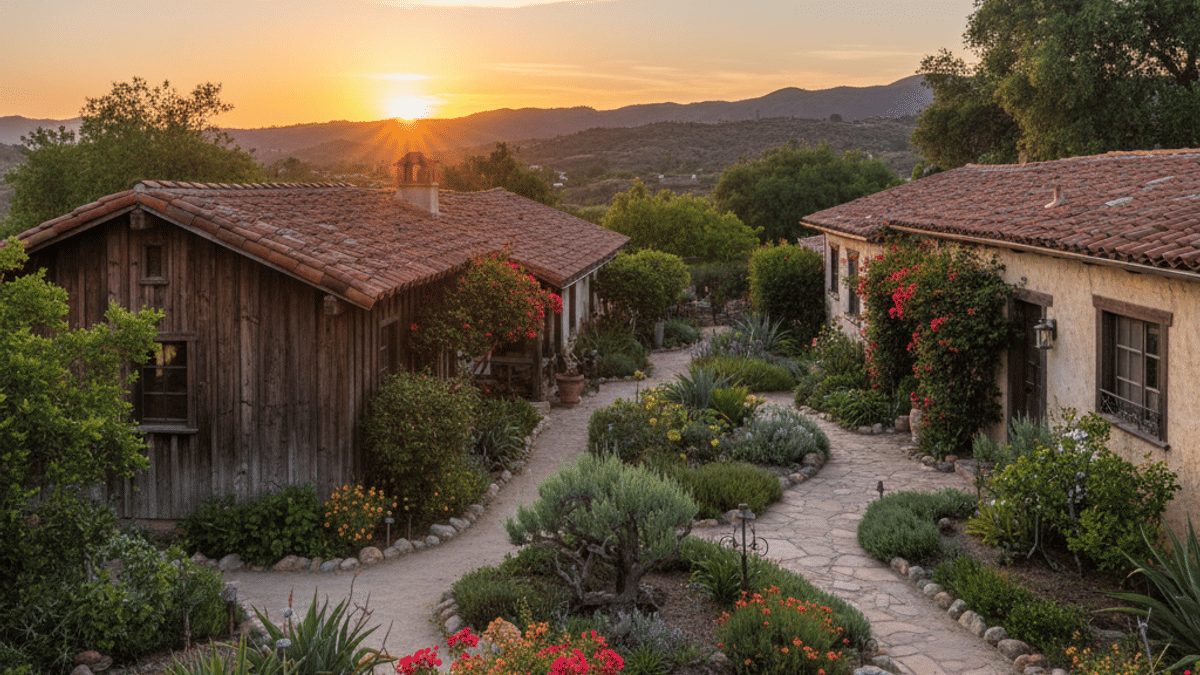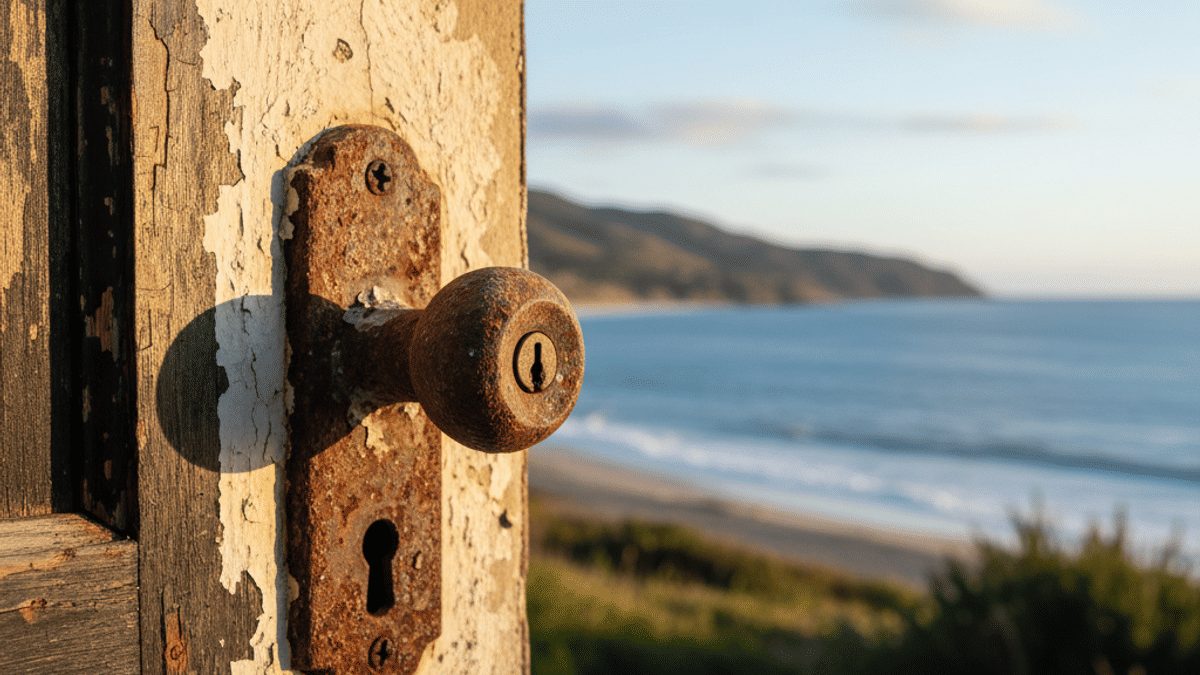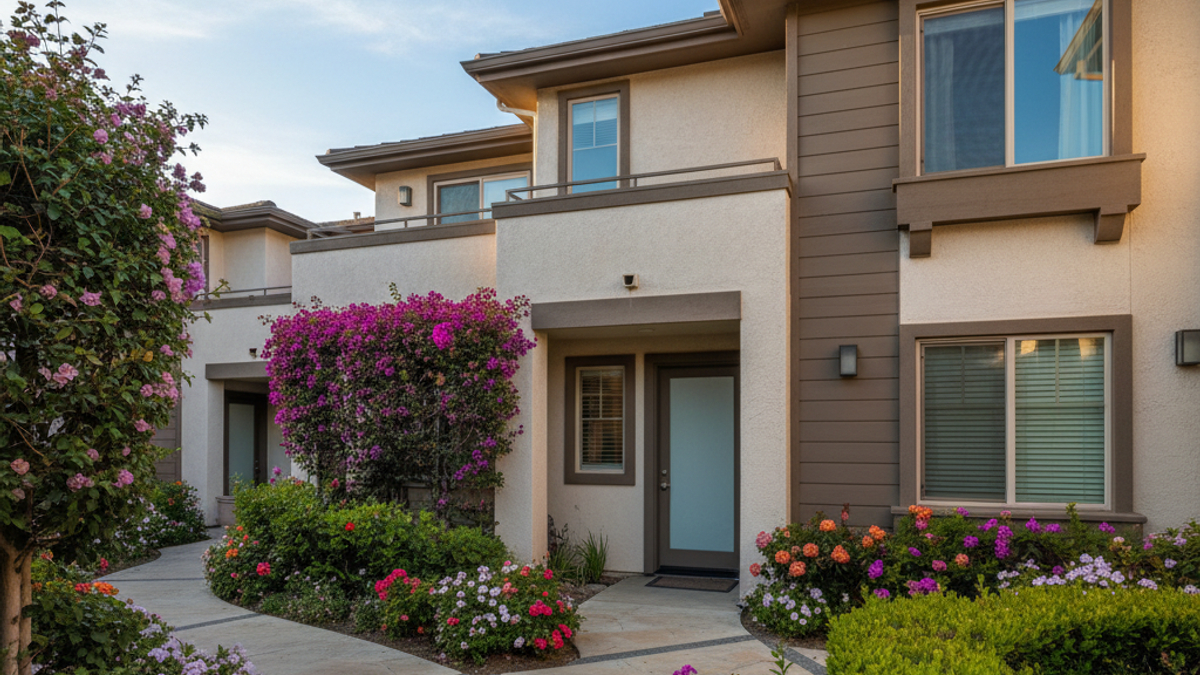Setting the Scene
Picture a slice of coastline that still feels a bit under-the-radar even though celebrities occasionally drop anchor nearby. That’s Dana Point. Roughly 34,000 residents call this harbor town home in 2025, and the number keeps inching upward—nothing wild, just a steady trickle of new neighbors who discover the cliffs, the kelp beds, the sunsets that light up Lantern Village like a movie set. Median sale price? Right around $1.68 million. Up 5–6 percent from last year and flirting with $920 a square foot. Homes don’t sit long; average days on market hover under 30. Folks aren’t exactly fleeing, but inventory stays tight because owners hang on for the lifestyle credit alone.
The Upside—Why People Keep Moving Here
Salt-air Therapy on Tap
You roll out of bed, walk three blocks, and boom—ocean. Not just any beach, either. Strands Beach throws down rolling sets that beginner surfers can actually handle. A mile north, Baby Beach sits inside the breakwater, ideal for paddleboards and toddlers who refuse to stay dry. The cliff trails above Headlands get you 200-foot views without needing alpine lungs. It’s hard to stay stressed when the horizon keeps reminding you to breathe.
A Harbor That’s Actually Useful
Many coastal cities boast a “harbor” that amounts to a postcard. Dana Point’s marina works for locals. Slip waitlists are epic, sure, but you can still book a half-day fishing charter on a Tuesday without planning six months ahead. The harbor’s $400-million revitalization (Phase 1 finishes late 2025) means wider promenades, new restaurants, and more kayak launches. Translation: better waterfront access without the usual SoCal elbowing.
School Choices Without the Buzzwords
Elementary campuses feed into Capistrano Unified, and test scores land comfortably above the state average. Want smaller class sizes or a niche curriculum? You’ll find private campuses tucked into cul-de-sacs from Monarch Beach to San Clemente. Homeschool pods meet in the library corner overlooking the bluff. The point: you get options, not mandates.
Micro-Climate Magic
July in inland Orange County can feel like a hair-dryer in your face. Dana Point usually clocks in 8–10 degrees cooler, thanks to those afternoon onshore winds that sweep across the harbor. Winter nights rarely dip below 48. Your HVAC system basically lives a part-time life, and your utility bill shows it.
Community That Shows Up
Tall Ships Festival. Festival of Whales. Concerts in the park that feel more like neighborhood potlucks than city-sponsored spectacles. People here volunteer for beach clean-ups because they actually surf that stretch the next morning. It’s not Mayberry—and no one pretends it is—but if you shout “Anyone got jumper cables?” in the Ralphs parking lot, someone will answer.
Job Commute Hacks
Sliding into South County offices? You’re golden. Even trips to San Juan Capistrano or Laguna often take less than 15 minutes. Need to hit Irvine tech campuses? Reverse traffic southbound in the morning shaves anxiety. Bonus: Metrolink’s station in nearby San Juan gives you a once-a-day commuter train option if you’re headed to LA Union Station. Not glamorous, but a lifesaver when the 5 turns into a parking lot.
Short-Term Rental Limits Keep Nights Quiet
The city caps whole-home short-term permits at 115. That ceiling keeps rotating Airbnb parties to a minimum. Weekends still hum, yet you’re less likely to find bachelor groups howling at 2 a.m. than in some neighboring beach towns.
The Downside—What Might Make You Pause
Housing Sticker Shock
Yes, we all know California isn’t cheap, but Dana Point prices still raise eyebrows. That median $1.68 million hides a spread: older condo conversion under $900k? Rare, yet possible if you pounce. Single-family with an ocean peek? Two million plus, easy. And older houses often need drainage upgrades because cliff soil moves—or smells funny from 1960s plumbing. Budget for retrofits or roll the dice.
Property Tax Bumps After Remodels
Prop 13 keeps assessed values low—until you knock down a wall. A “major remodel” triggers reassessment, and your annual bill can double overnight. Locals joke you can either keep the lime-green kitchen tile from 1974 or fork over another five figures a year. No middle ground.
Traffic Pinch Points
Pacific Coast Highway is gorgeous, but two lanes each way through town means one fender-bender and you’re idling next to Doheny for 40 minutes. Crystal Lantern and Del Prado handle overflow, yet they funnel back to the same PCH bottleneck. Weekends see visitor counts triple. If you work odd hours, no sweat. Nine-to-fivers? Bring podcasts.
Limited Public Transit
A few OCTA buses swing by, though intervals hover at 45 minutes, and routes stop before midnight. Rely on Uber or plan on buying a car. Street parking near the beachfront neighborhoods vanishes after sunrise; garages become non-negotiable, not nice-to-have.
Coastal Hazards Aren’t Theoretical
King-tide mornings sometimes shut down the only access road to the harbor. Erosion eats at Capistrano Beach County Park every winter. Insurance carriers keep tweaking premium tables. You will sign extra disclosures about sea-rise projections, bluff stability, and wildfire embers that could jump the freeway if winds turn east. Sleep better once you budget for a robust policy.
Small-Town Politics—Everyone Knows Everything
City council meetings get spicy when harbor redevelopment or accessory dwelling unit ordinances hit the agenda. Your neighbor might also sit on the planning commission. That interconnectedness breeds accountability, but it can feel claustrophobic if you prefer anonymity.
Food Scene Is Pricey, Portion Sizes Petite
Brunch at a harbor-view café can flirt with thirty bucks before tip. Locals swear by tuck-away taco shops on Del Obispo for value, yet true grocery bargains require a Costco run in San Juan Capistrano. Chalk it up to coastal markup; the ocean view always sneaks onto the receipt.
Wrapping It Up
So—Dana Point. Breezy cliffs, reliable surf, tight community, tempered micro-climate. Also: million-dollar mortgages, spotty transit, and council drama aired in real time. If you crave early-morning paddle sessions before Zoom calls, the scales might tip in favor. If you need big-box shopping and four lanes of traffic flow, perhaps keep looking inland. Either way, walk those neighborhood streets at sunset. Feel the air shift. Your gut will tell you louder than any blog whether Dana Point matches your next chapter.
FAQs Buyers Keep Whispering
How fast do homes really sell?
Median days on market sit around 27 right now, but anything under $1.5 million with a garage can enter escrow in a weekend.
Can I find new construction?
Mostly infill projects or custom rebuilds. Large tracts finished decades ago, and strict height limits keep skyscraper dreams in check.
Are HOA fees outrageous?
Condos near Monarch Beach hover $450-$650 a month. Single-family pockets like Dana Bluffs carry no HOA at all. Read the fine print; rules vary block to block.
What’s the vibe after dark?
A dozen bars, many closing by 11. Most weeknights feel mellow—think soft guitar at The Harbor Grill, not nightclub bass.
Do locals actually swim year-round?
Wetsuits help. Water temps dip to high-50s in January, yet a core group hits Doheny daily, rain or shine.
Any big employers in town?
Tourism, marine services, a sprinkling of biotech offices off Camino Capistrano. Serious corporate gigs still orbit Irvine or San Diego. Plan for a commute if that’s your lane.
Is it dog-friendly?
Leashed pups wander nearly everywhere. The city’s Dolphin & Baby Beach areas host dog-focused meetups at sunrise. Just watch the posted hours—tickets happen.

